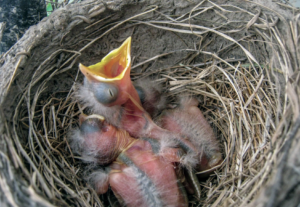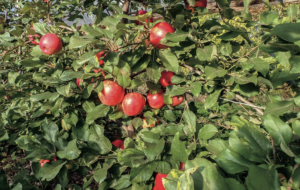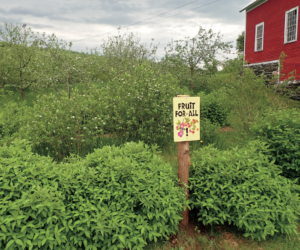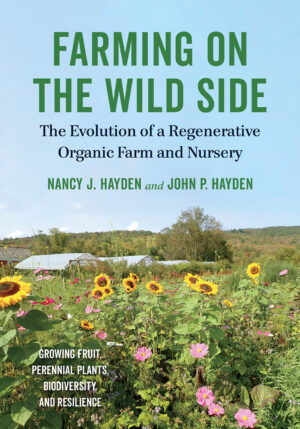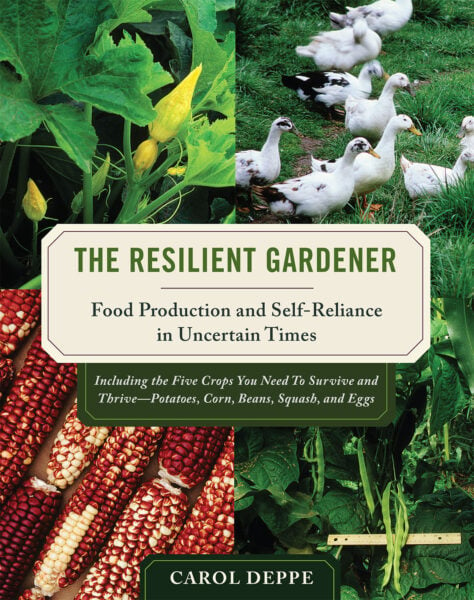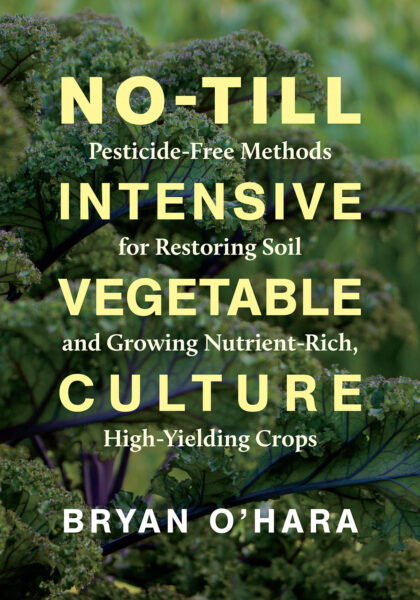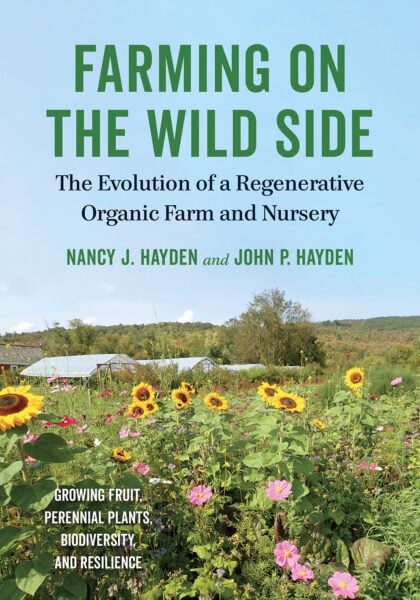Rewilding Your Land
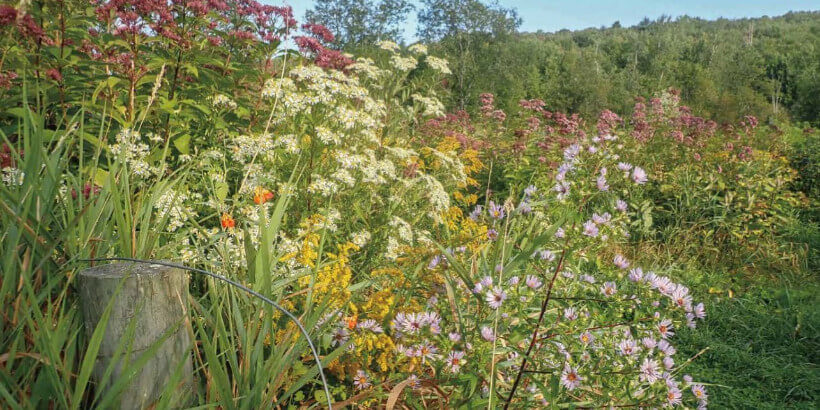
Having a picture-perfect farm may be aesthetically pleasing, but those farms are likely lacking in biodiversity—a necessity for an operating farm. Scaling back on some farm maintenance like mowing or clearing out ditches allows the land to return to its natural wild state. This provides more room for fruit-bearing plants to grow and animals to control small pests.
The following is an excerpt from Farming on the Wild Side by Nancy J. Hayden and John P. Hayden. It has been adapted for the web.
(Photography courtesy of Nancy J. and John P. Hayden unless otherwise noted.)
Rewilding the farm has been an ongoing project for us.
When we bought the place, we knew it was lacking in life even though it looked like the iconic, bucolic Vermont dairy farm. Every square inch was mowed or hayed except for a small wooded area in the corner of the back pasture. In those early years, we didn’t have a tractor or a brush hog–type mower, so we replaced the mowing machines with grazing animals and stopped mowing many areas, especially patches around barns and the ditches.
Reduced mowing was an easy first transitioning step. It made sense to us too. As kids, we’d love these types of wild places for exploring and hiding out in “forts.” We also knew they were needed for grassland birds, such as bobolinks and meadowlarks, and for other wildlife. Why not make less work for us and create wild places for us, our kids, and wildlife?
After we stopped mowing and cleaning out ditches, shrubs and trees came back—and so did the birds. The birds didn’t come back just because of the berries and shelter provided by the trees and shrubs, but for the insects too. Insects and insect larvae eat the leaves of native trees and shrubs. Birds, even seed-eating birds, need to feed insects or other arthropods to their young as an important protein source. It’s all connected. We loved watching the barn swallows return in the spring and the song sparrows swoop into the barn when the door was open to grab a few big barn spiders relaxing in their webs. They were going to make a tasty meal for their babies.
The increase in bird numbers and the overall insect diversity on the farm are what we have noticed changing the most over the years. We’re so glad they’ve moved in. A few summers back, an avid birdwatcher (or maybe we should say “bird-listener”) attended a farm tour and identified more than twenty-five different bird species in about half an hour from their songs and calls. Even in winter, the crows caw while chickadees, blue jays, and juncos chatter along the stream and the back-fence line with its hawthorns, ash, and other trees and shrubs.
At the end of February and beginning of March, the male red-winged blackbirds come back to the farm, staking out their territory before the females return later in the spring. They’re so cheerful in the morning with their gurgle-lees call and bright red wing bands. The yellowthroats and chestnut-sided warblers follow in May, and flitter in the ecotone between woods and pasture. Even our dogs are excited by the calls and songs of spring.
Letting our stream edges grow into birch, willow, box elders, and a variety of other trees and shrubs created a three-dimensional habitat while providing food sources for birds and pollinators. It also formed a nice visual screen from our neighbors. The people we bought the farm from had moved up to a nearby hill overlooking the farm.
How could they help but watch what we did with it? The old owners didn’t appreciate our new “scruffy horticulture” look, though. Through the community grapevine we heard various complaints about how we weren’t keeping the place up. The truth was, we were “keeping it up” ecologically much better than in the past.
We’d been rethinking our predominant cultural aesthetic of manicured lawns and manicured farms since day one, but we still had a lot of mowed lawn. We asked ourselves why and couldn’t come up with a good answer. We could only come up with more reasons to reduce the lawn to an area large enough to play badminton and have a lacrosse catch. That’s when we decided to turn the front lawn into a smallscale apple orchard.
John had loved apple orchards and fruit growing ever since his graduate school days studying biological control of apple pests. Almost no one in Vermont was making the move toward growing organic apples, and only a few were growing organic fruit. The IPM strategies that he had worked on during graduate school twenty-five years earlier had not lived up to their promise of replacing pesticides as the mainstay of a pest management program. In fact, conventional and organic apple growers were often backsliding into the “regular calendar spray schedule” mentality whether there were pests present or not. Also, the pesticides had changed. Neonicotinoids, a new class of broad-spectrum insecticides had entered the market in the mid-1990s and were gaining ground, though evidence was growing that they were negatively impacting bee populations.
Organic fungicides, copper and sulfur, have negative environmental impacts as well. Additionally, broad-spectrum organic insecticides such as Entrust (manufactured by DowDuPont) are toxic to pollinators and other beneficial insects. We weren’t interested in those models.
Organic apple production in the Northeast United States isn’t widespread. Trying to grow blemish-free apples in a conventional orchard setup with organic sprays as substitutes doesn’t work economically or ecologically.
We wanted to grow no-spray organic apples and prove it could be done.
We sorted apples for fresh eating and pressed gnarly ones for cider. We reinvented our side-front lawn by turning it into an orchard flanked with rows of unusual fruits (gooseberries, currants, honeyberries, and lingonberries).
When we planted hundreds of trees and shrubs in other areas on the farm and let our pasture revert to a wildflower meadow, we heard even more grumbling from our neighbors. Bucking convention can result in raised eyebrows by those who believe anything less than carefully manicured green lawn—that is, alien grasses that are near biological deserts dominated by a few species—and mowed fields looks unkempt.
But attitudes are changing. As each one of us begins to realize that lawns are part of the problem, we may see that reinventing our lawns, turning them into diverse food-growing and native plant gardens, can be part of the solution. This was done with victory gardens in both world wars and more recently with the Food Not Lawns movement.
We like to imagine the change in nutrition that the typical American diet would undergo if lawns became gardens and food forests.
We think about the increase in birds and other wildlife if backyards were filled with native biodiverse gardens. We think about biodiverse, organic, rich soils, and trees and shrubs sequestering carbon in millions of newly planted acres.
Recommended Reads
Recent Articles
Garlic mustard: while known as “invasive,” this plant can be consumed in its entirety and has great nutritional value. Plus, the garlic-flavor is a perfect addition to any recipe that calls for mustard! The following are excerpts from Beyond the War on Invasive Species by Tao Orion and The Wild Wisdom of Weeds by Katrina…
Read MoreEveryone loves a refreshing, fermented, nutritious drink…even your garden! Take your fermentation skills out of the kitchen and into the garden by brewing fermented plant juice. The following is an excerpt from The Regenerative Grower’s Guide to Garden Amendments by Nigel Palmer. It has been adapted for the web. How to Make Fermented Plant Juice Fermented…
Read MoreWant to see your crops thrive this upcoming growing season? The key is in soil fertility and health. Spend time maintaining your soil’s health to guarantee bigger and better crops come harvest time! The following is an excerpt from No-Till Intensive Vegetable Culture by Bryan O’Hara. It has been adapted for the web. What Is Soil Fertility?…
Read MoreMany know the effects of catnip on our feline friends, but few realize that catnip has medicinal effects for humans. From stomach aches to reducing fevers, catnip is a versatile herb with many benefits. The next time you grow this plant for your cat you may end up taking a few cuttings for yourself! The…
Read MoreIt’s time to take control of your seeds and become a plant breeder! Saving your seed allows you to grow and best traditional & regional varieties, and develop more of your own. The following excerpt is from Breed Your Own Vegetable Varieties by Carol Deppe. It has been adapted for the web. Becoming A Plant…
Read More

